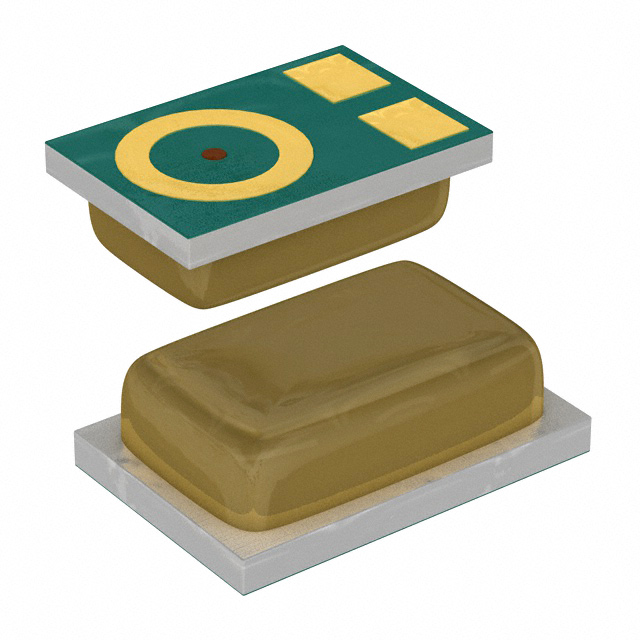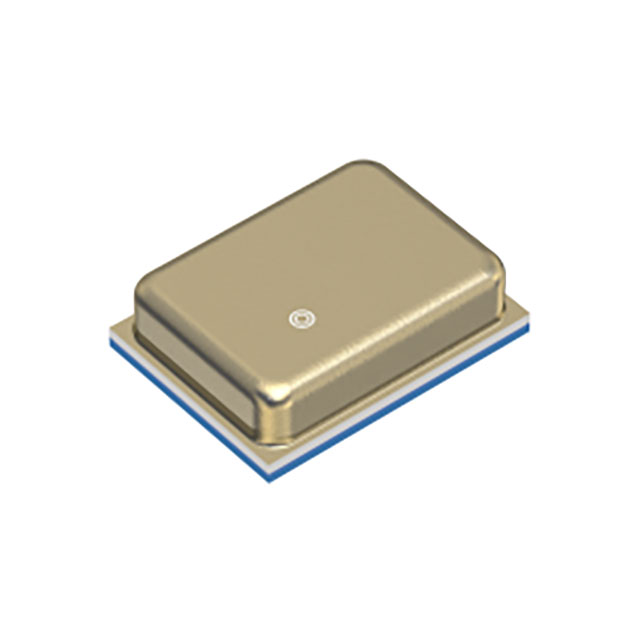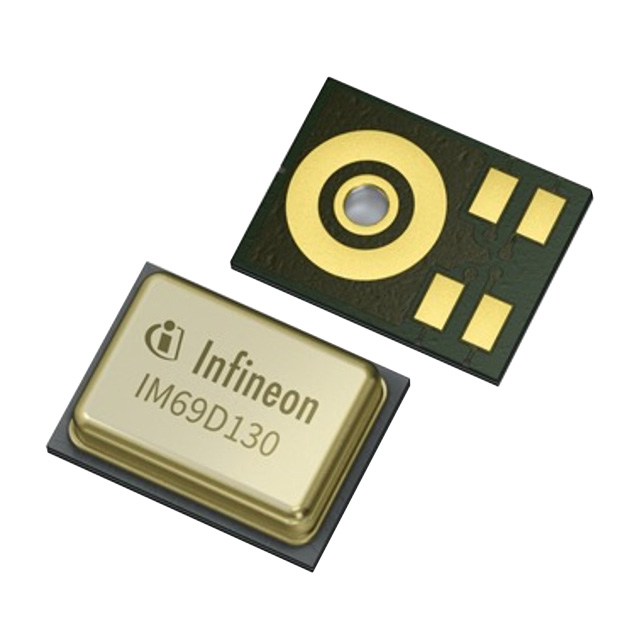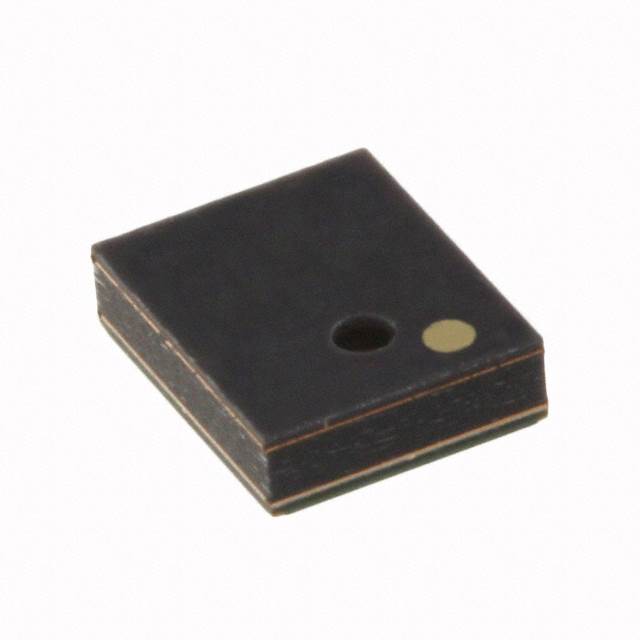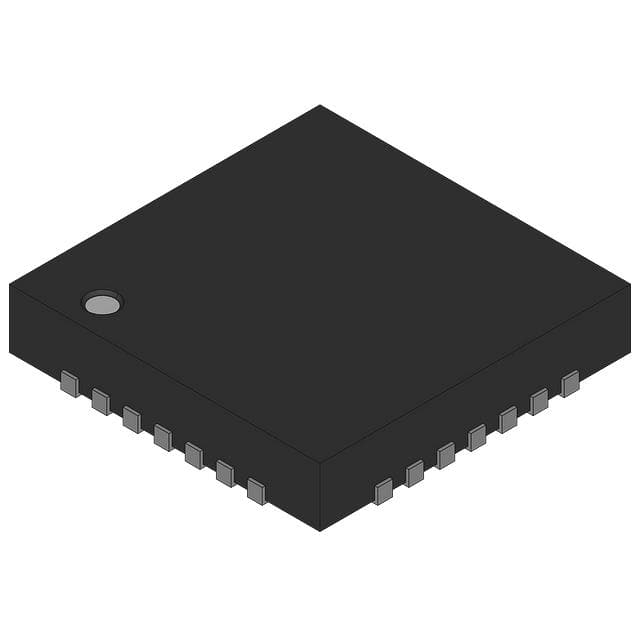LIS2DH12TR: MEMS digital output motion sensor
The STMicroelectronics LIS2DH12TR is a low-power, three-axis accelerometer from the LIS2DH series. It provides accurate acceleration measurements and is widely used in various applications that require acceleration detection, such as consumer electronics, industrial equipment, motion tracking, automotive electronics, etc.
ADM2587EBRWZ: Signal and Power Isolated Data Transceiver
ADM2587EBRWZ is an isolated RS-485/RS-422 transceiver chip produced by Analog Devices, which can be configured as half-duplex or full-duplex.
Microcontroller ATmega series: ATMEGA8A-AU Introduction
The ATMEGA8A-AU is a popular 8-bit microcontroller from Microchip Technology (formerly Atmel) and part of the ATmega series. It is based on the AVR architecture and is designed for a wide variety of embedded applications.
STM32F030K6T6 Development Board Introduction
STM32F030K6T6 is a microcontroller (MCU) based on the ARM Cortex-M0 core produced by STMicroelectronics.
MPU-6050: High-Performance 6-Axis Motion Sensor with I2C Bus Interface
The MPU-6050 is a widely used Inertial Measurement Unit (IMU) that combines a 3-axis accelerometer and a 3-axis gyroscope.
Texas Instruments TPS51200DRCR
The TPS51200DRCR is a high-efficiency dual-channel synchronous step-down converter produced by Texas Instruments (TI) and is commonly used in applications that provide regulated power, especially in systems that require low power consumption and high-efficiency power management.
STMicroelectronics STM32F103VET6
STM32F103VET6 is a 32-bit microcontroller based on the ARM Cortex-M3 core produced by STMicroelectronics. It belongs to the high-performance product line of the STM32F1 series and is widely used in embedded applications such as industrial control, IoT devices, and home appliance control.
STMicroelectronics STM32F105VCT6
STM32F105VCT6 is a versatile and powerful microcontroller that combines an ARM Cortex-M3 core with a rich set of peripherals and low power consumption. Its 128 KB Flash, 16 KB RAM, and extensive I/O options make it a suitable choice for a variety of embedded applications in industrial, automotive, and consumer markets. Its robust features, such as USB, CAN, ADC, and DMA, along with low-power operation, make it a solid solution for systems requiring real-time processing and efficient power usage.
Texas Instruments ULN2003ADR
ULN2003ADR is a common high current power driver produced by STMicroelectronics. It is a variant of the ULN2003 series and is usually used to control high current loads such as stepper motors, relays, solenoid valves, etc.
ATMEGA328P-PU
ATmega328P-PU is an 8-bit microcontroller manufactured by Microchip Technology (formerly Atmel), widely used in embedded systems and development boards, especially popular on the Arduino platform.
STM32F407VGT6 Microcontroller
TM32F407VGT6 is a powerful and flexible microcontroller suitable for a variety of embedded applications. Its high performance, rich peripheral interfaces and powerful processing capabilities make it an ideal choice for developing complex systems.
MCIMX6G2CVM05AB
MCIMX6G2CVM05AB is a powerful application processor that combines high-performance processing capabilities and rich multimedia functions, making it very suitable for a variety of embedded applications. Its low power consumption characteristics and flexible interface design enable it to perform well in various industrial and consumer applications.
STM32F405RGT6
The STM32F405RGT6 is a high-performance 32-bit microcontroller produced by STMicroelectronics. It is based on the ARM Cortex-M4 core and is suitable for embedded applications that require high performance and processing power.
STM32F030C8T6
STM32F030C8T6 is a powerful and affordable microcontroller suitable for a variety of low-power and low-cost embedded applications. Its flexible peripherals and diverse application areas make it a popular choice for developers.
ULN2803ADWR
Overview of ULN2803ADWR features, functions, similarities, pinouts and related Q&A
LIS2DH12TR: MEMS digital output motion sensor

STMicroelectronics LIS2DH12TR is a high-precision, low-power triaxial accelerometer. It supports flexible acceleration range configuration and output data rate, and has multiple interface options, suitable for a variety of low-power embedded applications, especially in consumer electronics, industrial control, motion tracking and other fields. With built-in filters and self-test functions, it can provide reliable and high-quality acceleration data to meet the needs of different applications.
LIS2DH12TR Main Features
Acceleration Measurement Range:
Configurable acceleration measurement range, supporting four measurement range options of ±2g, ±4g, ±8g and ±16g, to meet different acceleration detection needs.
Output Data Rate (ODR):
Supported output data rate (ODR) range from 1 Hz to 1.6 kHz, providing flexible data output rate options for various application scenarios.
Low Power Mode:
The LIS2DH12TR provides extremely low power consumption, especially for battery-powered applications. The sensor has multiple low-power operating modes to provide high-precision measurements while minimizing power consumption.
Digital Interface:
The I2C and SPI compatible interfaces make it easy to communicate with a microcontroller or other digital system, supporting two-wire and four-wire connections.
Built-in filter:
The accelerometer has a built-in programmable low-pass filter that can filter the output data, reduce noise interference, and improve signal quality.
High accuracy:
The LIS2DH12TR provides high accuracy and stability, and can measure very subtle acceleration changes, suitable for high-precision applications.
Built-in self-test function:
Provides a self-test function to help users ensure that the sensor is in good working condition.
Small package:
The LGA-12 package is small in size, which is very suitable for space-constrained embedded systems and consumer electronic devices.
LIS2DH12TR Pin Diagram
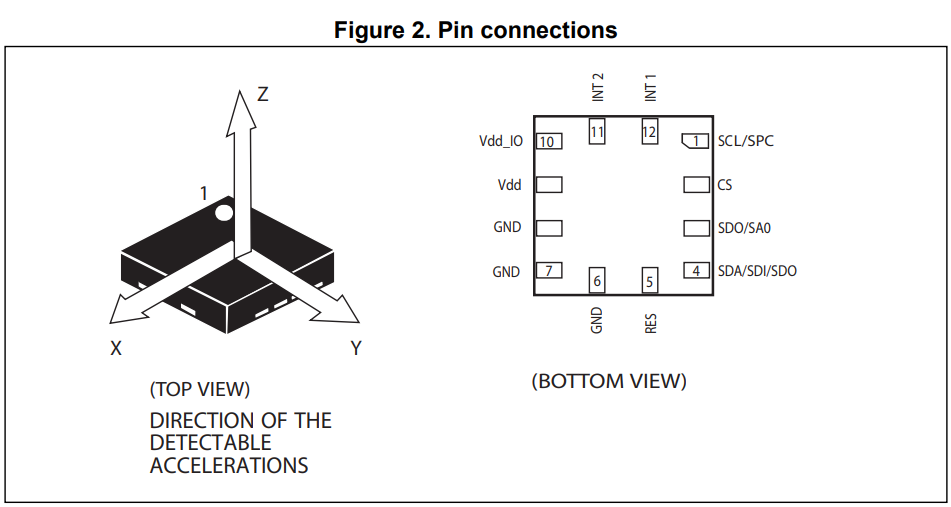
ADM2587EBRWZ Similar Comparison
LIS2DH12TR vs MMA6361LT vs MMA6331LR1 Comparison
Below is a detailed parameter comparison of three accelerometers: STMicroelectronics LIS2DH12TR, NXP MMA6361LT and NXP MMA6331LR1. These sensors are widely used in motion detection, gesture recognition, vibration monitoring and other fields, but they differ in performance, functions and application scope.
| Feature | LIS2DH12TR | MMA6361LT | MMA6331LR1 |
|---|---|---|---|
| Image |  |  | 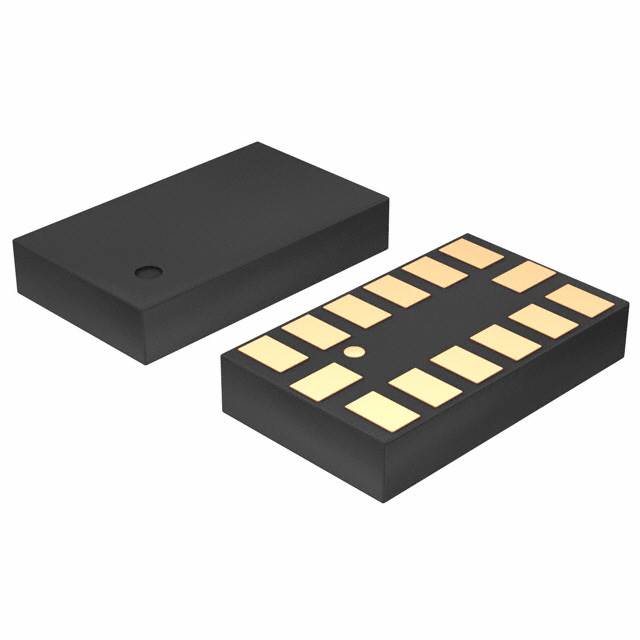 |
| Manufacturer | STMicroelectronics | NXP USA Inc. | NXP USA Inc. |
| Measurement Range (g) | ±2g, ±4g, ±8g, ±16g | ±1.5g, ±2.5g, ±6g, ±12g | ±1.5g, ±3g, ±6g, ±12g |
| Output Data Rate (ODR) | 1 Hz to 1.6 kHz | 10 Hz to 400 Hz | 10 Hz to 800 Hz |
| Resolution | 12-bit | 10-bit | 10-bit |
| Interface | I2C, SPI | I2C | I2C |
| Operating Voltage (V) | 1.71V to 3.6V | 2.5V to 3.6V | 2.5V to 3.6V |
| Power Consumption | 3 µA (Low-power mode) | 100 µA (typical) | 180 µA (typical) |
| Temperature Range | -40°C to +85°C | -40°C to +85°C | -40°C to +85°C |
| Package | LGA-12 (2x2x1 mm) | DFN-10 (3x3 mm) | LGA-14 (4x4 mm) |
| Integrated Features | Low-pass filter, self-test, wake-up function | Built-in filter, self-test | Built-in filter, self-test |
| Sensitivity | Configurable (depends on range) | 7.5mV/g (±1.5g), 6.25mV/g (±2.5g), etc. | 6.25mV/g (±1.5g), 3.125mV/g (±3g), etc. |
| Interrupt Function | Yes | Yes | Yes |
LIS2DH12TR is a high-performance, low-power accelerometer with higher accuracy and wider measurement range, suitable for applications requiring high dynamic range and accuracy. It supports I2C and SPI interfaces and has flexible working modes for battery-powered applications.
MMA6361LT and MMA6331LR1 are more suitable for general consumer and embedded applications, providing moderate measurement range and data rate, slightly higher power consumption, but can provide sufficient accuracy in some low-frequency applications.
Selection Recommendation:
If your application requires higher accuracy, larger dynamic range or lower power consumption, LIS2DH12TR is a better choice.
If your application is low-frequency data acquisition and power consumption is not a big requirement, MMA6361LT or MMA6331LR1 would be a more suitable choice.
LIS2DH12TR PDF Datasheet
FAQs for LIS2DH12TR
1. What is the measurement range of LIS2DH12TR?
The LIS2DH12TR provides four configurable measurement ranges:
±2g, ±4g, ±8g and ±16g.
Users can select the appropriate measurement range as needed to meet different application requirements.
2. What is the output data rate (ODR) of LIS2DH12TR?
The LIS2DH12TR supports output data rates (ODR) from 1 Hz to 1.6 kHz, suitable for different sampling requirements. Low speed modes (such as 1 Hz) are suitable for low power applications, while high frequencies (such as 1.6 kHz) are suitable for applications that require high data update frequencies.
3. What kind of interface does the LIS2DH12TR use?
The LIS2DH12TR supports both I2C and SPI interfaces, which can flexibly communicate with microcontrollers or other digital devices.
The I2C address can be configured through hardware pins.
SPI provides higher data transfer rates.
4. What is the power consumption of the LIS2DH12TR?
The LIS2DH12TR consumes about 3 µA in low power mode, which makes it ideal for battery-powered applications.
In normal operating mode, power consumption is higher, but still remains at a low level, which is ideal for designs that require low power consumption and long battery life.
5. Does the LIS2DH12TR have interrupt capabilities?
Yes, the LIS2DH12TR is equipped with two interrupt pins (INT1 and INT2) that can be configured to trigger different events, such as acceleration thresholds, motion detection, free fall detection, etc. This makes it ideal for applications that require real-time response.
6. What is the operating voltage of the LIS2DH12TR?
The LIS2DH12TR supports an operating voltage range of 1.8V to 3.6V, which is suitable for low-voltage systems. This makes it compatible with most modern low-voltage microcontrollers and widely used in embedded and consumer electronic devices.
7. Does the LIS2DH12TR support a self-test function?
Yes, the LIS2DH12TR has a built-in self-test function that can help users verify the working status of the accelerometer and ensure the accuracy and reliability of the device.
8. What is the package of the LIS2DH12TR?
The LIS2DH12TR uses an LGA-13 package with a size of 2x2x1 mm, which is very compact and suitable for space-constrained designs such as smartphones, wearable devices, consumer electronics, etc.
9. What temperature range can the LIS2DH12TR withstand?
The LIS2DH12TR has an operating temperature range of -40°C to +85°C, which is suitable for industrial and consumer environments and can withstand most common operating conditions.
10. Does the LIS2DH12TR have a built-in filter?
Yes, the LIS2DH12TR is equipped with a programmable low-pass filter that can filter the output acceleration signal, reduce noise, and improve signal quality. This is very important for accurate acceleration measurement, especially in high-frequency noise environments.
11. What are the typical applications of the LIS2DH12TR?
The LIS2DH12TR is mainly used in the following applications:
Motion tracking (such as fitness trackers, smart watches, etc.).
Gravity sensing (such as automatic screen rotation).
Vibration monitoring (such as equipment status monitoring).
Automotive electronics (such as collision detection).
Industrial automation (such as machine status monitoring and fault diagnosis).
Earthquake detection (such as building monitoring).
12. What functional modes does the LIS2DH12TR support?
The LIS2DH12TR supports multiple operating modes, including:
Normal mode: In this mode, the sensor continuously collects data and transmits.
Low power mode: Significantly reduces power consumption by reducing the frequency of data acquisition.
Single conversion mode: In this mode, the sensor only samples data once.
Interrupt mode: When the sensor detects a certain condition (such as acceleration exceeding a threshold), an interrupt event is triggered.
13. Does the LIS2DH12TR have a protective design?
The LIS2DH12TR has built-in anti-electromagnetic interference (EMI) protection and overvoltage protection, which helps improve reliability in electromagnetic noise environments.
14. What types of motion can the LIS2DH12TR detect?
The LIS2DH12TR can detect various types of acceleration and motion, including:
Static acceleration (such as gravity) for gravity sensing and tilt detection.
Dynamic acceleration (such as motion or vibration) for motion detection and vibration analysis.
Free fall detection, triggering an event when the acceleration reaches zero.
